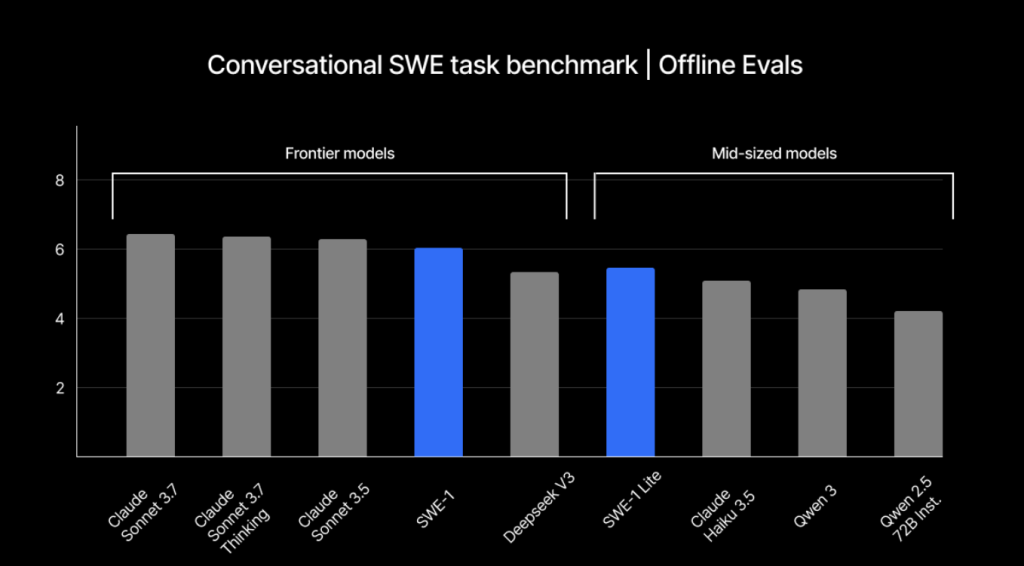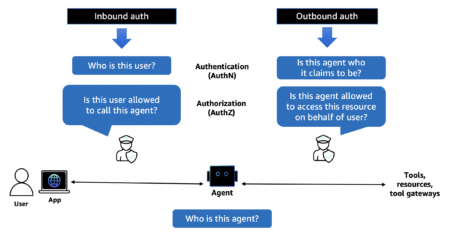In a move that signals a deeper convergence of AI and software engineering, Windsurf has announced the launch of SWE-1, its first family of AI models purpose-built for the entire software development lifecycle. Unlike traditional code generation models, SWE-1 is designed to assist with real-world software engineering workflows—handling everything from incomplete code states to multi-surface task orchestration.
This marks a pivotal shift in Windsurf’s evolution—from offering AI-powered developer tools to designing proprietary models engineered for the complexity and nuance of real software engineering environments.
Beyond Code Generation: Engineering-Native Intelligence
While many AI systems are optimized for static code completion, SWE-1 is architected around a more realistic premise: that codebases are often incomplete, tasks span multiple tools, and developers frequently operate across asynchronous contexts.
“Writing code is just a small part of the job,” said Varun Mohan, CEO and co-founder of Windsurf. “To accelerate the entire development process by 99%, we needed models that are native to the workflows engineers actually face.”
By training on partially written programs, multi-modal workflows, and evolving interaction states, SWE-1 models are positioned not as code assistants, but as systems engineers—capable of understanding context, continuity, and complexity.
The SWE-1 Family: Three Models, One Unified Vision
The SWE-1 release includes three distinct models tailored to different use cases within the developer ecosystem:
- SWE-1: The flagship model, optimized for long-range context, multi-tool reasoning, and advanced workflows. It’s designed to support tasks that span beyond single-turn completions, including debugging, architecture exploration, and integration across tools. According to Windsurf, its performance is competitive with models like Claude 3.5 Sonnet and GPT-4.1—at a more favorable cost-to-performance ratio.
- SWE-1-lite: A streamlined variant replacing Windsurf’s earlier Cascade Base model. It’s built for efficiency while retaining high contextual fidelity, making it well-suited for IDE integrations and mid-tier deployments.
- SWE-1-mini: A latency-optimized model designed to power real-time predictive suggestions inside Windsurf’s own developer environment (Tab). It excels at fast, passive completions and local tasks.
All three models are natively integrated into Windsurf’s platform, enabling fluid interaction across coding interfaces, terminals, documentation, and system tooling.


Flow Awareness: Aligning with the Developer’s State of Mind
A cornerstone of SWE-1 is its flow awareness—a capability that allows the models to reason over time, track developer intentions, and maintain contextual coherence across tool boundaries.
Rather than treating tasks as isolated prompts, SWE-1 maintains awareness of the broader engineering flow. This includes recognizing the state of a project, anticipating downstream requirements, and syncing across multiple surfaces. The result is a model that feels less like a chatbot and more like an embedded engineering collaborator.
Benchmarking Against Frontier Models
Internally, Windsurf evaluated SWE-1 against leading general-purpose LLMs. Results show competitive performance with Claude 3.5 Sonnet in tasks requiring tool usage, multi-hop reasoning, and planning. However, Windsurf emphasizes that SWE-1 achieves this while being more cost-efficient and better aligned with developer-native workflows.
This cost-conscious design, paired with engineering-focused training data, offers an alternative to large generalist models that are often expensive to run and less attuned to software workflows.
Conclusion
SWE-1’s release represents a broader trend in AI: the specialization of models to suit domain-specific needs. As software development grows increasingly complex—with cloud deployments, dev environments, and AI tools in constant motion—models like SWE-1 offer a path forward that is both pragmatic and powerful.
By embedding deep knowledge of how software is built, maintained, and evolved, Windsurf positions SWE-1 not just as a coding tool—but as a system-level AI collaborator that understands the rhythms and realities of modern software engineering.
Check out the Technical Details and Download. All credit for this research goes to the researchers of this project. Also, feel free to follow us on Twitter and don’t forget to join our 90k+ ML SubReddit.
The post Windsurf Launches SWE-1: A Frontier AI Model Family for End-to-End Software Engineering appeared first on MarkTechPost.
Source: Read MoreÂ


